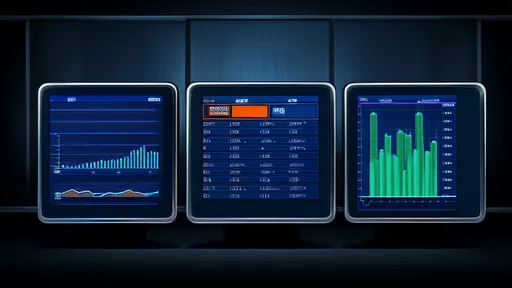The world of database management has evolved significantly over the past decade, with specialized storage architectures emerging to address specific use cases. Among these, wide-column stores have carved out a unique niche, offering distinct advantages for particular scenarios while presenting limitations in others. Understanding where this technology shines—and where it doesn’t—is critical for architects and engineers designing modern data systems.
Wide-column databases, often confused with traditional relational systems, operate on a fundamentally different principle. Instead of rigid tables with fixed schemas, they organize data into column families, allowing for sparse data representation and flexible schema evolution. This design makes them exceptionally well-suited for applications requiring high scalability and fast access to large volumes of semi-structured data.
One of the most prominent use cases for wide-column stores lies in handling time-series data. The ability to efficiently store and retrieve timestamped information across massive datasets has made this architecture popular in IoT applications, financial trading systems, and monitoring platforms. The columnar orientation allows for excellent compression of similar data types, while the wide-row format enables efficient range queries over time periods.
Content management systems with variable attributes often benefit from wide-column implementations. Unlike relational databases that require schema modifications to accommodate new content types, wide-column stores can dynamically adapt to changing content structures. This flexibility proves invaluable in digital asset management, e-commerce platforms with diverse product catalogs, and user profile storage where attributes may vary significantly between individuals.
The distributed nature of most wide-column databases makes them particularly resilient in global-scale applications. Their architecture typically allows for horizontal scaling across clusters, with tunable consistency levels that can be adjusted based on application requirements. This characteristic has led to widespread adoption in social media platforms, recommendation engines, and other applications demanding high availability and partition tolerance.
However, the strengths of wide-column stores come with well-defined boundaries. These systems often struggle with complex transactional workloads that require ACID guarantees across multiple operations. Applications needing rich joins between entities or sophisticated query patterns may find the wide-column model limiting. The denormalized nature of the data, while excellent for read performance, can create challenges in maintaining data integrity across updates.
Another area where wide-column stores show limitations involves analytical workloads requiring full-table scans. While columnar compression helps with certain types of analytics, the lack of sophisticated query optimizers found in data warehouse solutions makes them less suitable for complex reporting needs. The sweet spot lies in operational analytics—situations where real-time access to recent data matters more than deep historical analysis.
As with any technology selection, choosing a wide-column store requires careful consideration of access patterns and growth trajectories. The most successful implementations align the database's inherent strengths with application requirements, while recognizing scenarios where alternative storage solutions might better serve specific needs within a larger data ecosystem.
The evolution of wide-column stores continues as vendors add features to expand their applicability. Recent advancements include improved support for secondary indexes, lightweight transaction capabilities, and enhanced query languages. These developments gradually blur the traditional boundaries, making the technology viable for an expanding range of use cases while maintaining its core advantages for high-scale, flexible data storage.

By /Jul 11, 2025

By /Jul 11, 2025

By /Jul 11, 2025

By /Jul 11, 2025

By /Jul 11, 2025

By /Jul 11, 2025

By /Jul 11, 2025

By /Jul 11, 2025

By /Jul 11, 2025

By /Jul 11, 2025

By /Jul 11, 2025

By /Jul 11, 2025

By /Jul 11, 2025

By /Jul 11, 2025

By /Jul 11, 2025

By /Jul 11, 2025

By /Jul 11, 2025

By /Jul 11, 2025